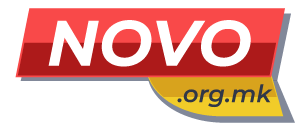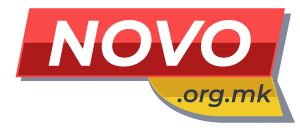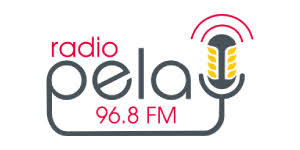Understanding Oxford Brookes University Moodle Platform
Oxford brookes university moodle
For students aiming to enhance their learning experience, utilizing the features found in the online educational framework can significantly contribute to academic success. Begin by familiarizing yourself with the dashboard, where you can access course materials, announcements, and discussion forums. Organizing your workspace here is key to staying on top of assignments and resources.
Engage actively in discussion boards and peer interactions. These forums provide invaluable opportunities for collaboration, allowing you to clarify concepts and receive feedback from classmates and instructors alike. Post questions regularly and contribute to conversations to deepen your understanding of the subject matter.
Take advantage of the file-sharing capabilities for submitting assignments promptly. Always check the specific submission guidelines provided within each course module to ensure compliance and avoid last-minute issues. Additionally, consider setting reminders for deadlines using calendar tools if offered.
Regularly monitor updates from instructors. Notifications regarding grading, feedback, and important announcements are typically posted in the news section of your course. Staying informed can help you adjust your study strategies and maintain good communication with faculty.
By leveraging these tools effectively, you can create a more organized and rewarding academic experience while navigating this educational environment.
How to Navigate the Oxford Brookes University Moodle Dashboard
To access your courses efficiently, locate the “My Courses” block on the dashboard. This section lists all enrolled modules. Click on the respective module title to enter the course page directly.
Use the navigation menu located on the left side of the screen. You will find links to various areas, including assignments, forums, and additional resources. Hovering over the navigation items reveals submenus for quicker access.
For a streamlined experience, customize your dashboard. Click on the “Dashboard” link in the top menu and select “Customize this page” to rearrange blocks according to your preference. You can add useful widgets like upcoming deadlines or recent activity.
Stay organized by checking the “Upcoming Events” section, which displays important dates. Regularly reviewing this area helps in keeping track of assignments and examination schedules.
Utilize the “Messages” feature to communicate with peers and instructors. The messages icon at the top right allows for quick exchanges without leaving the current page.
Access learning materials through the “Resources” section in each course. Look for lecture notes, reading lists, and supplementary materials that enhance your understanding of the subject matter.
Become familiar with the “Assessment” area where assignments are posted. Regularly check for new tasks and submission deadlines to ensure timely completion.
Finally, consult the help resources in the footer for guidance on technical issues or content-related questions. The user guides and FAQs can provide quick solutions to common problems.
Utilizing Course Resources and Activities on the Moodle Platform
Access course materials directly from the main dashboard. Locate the “Course Overview” section to see your enrolled classes. Each course will typically present a variety of resources such as lecture notes, reading lists, and assignment guidelines. Regularly check this section to stay updated on any changes or new uploads.
Take advantage of scheduled activities by marking your calendar with important dates. Interaction with peers and instructors often occurs through forums and quizzes. Engage actively in discussions to enhance understanding and clarify doubts. Utilize the messaging feature for direct communication with faculty members regarding course-related queries.
Complete assignments by following specific submission guidelines outlined within each course. Ensure file formats meet requirements to prevent issues. Submissions may be tracked using the “Grades” section, allowing you to monitor your progress and receive feedback promptly.
Seek additional learning materials through the “Resources” section, which may contain links to external databases or supplementary articles. These can deepen your knowledge and reinforce core concepts discussed during lectures. Participate in collaborative projects set within the “Activities” area, facilitating teamwork and skill development.
Lastly, familiarize yourself with assessment tools offered in the course structure, such as rubrics and self-assessments. This insight is beneficial for understanding grading criteria and refining your submissions. Engaging fully with the resources and activities will enhance your academic experience.
Oxford brookes university moodle
For students aiming to enhance their learning experience, utilizing the features found in the online educational framework can significantly contribute to academic success. Begin by familiarizing yourself with the dashboard, where you can access course materials, announcements, and discussion forums. Organizing your workspace here is key to staying on top of assignments and resources.
Engage actively in discussion boards and peer interactions. These forums provide invaluable opportunities for collaboration, allowing you to clarify concepts and receive feedback from classmates and instructors alike. Post questions regularly and contribute to conversations to deepen your understanding of the subject matter.
Take advantage of the file-sharing capabilities for submitting assignments promptly. Always check the specific submission guidelines provided within each course module to ensure compliance and avoid last-minute issues. Additionally, consider setting reminders for deadlines using calendar tools if offered.
Regularly monitor updates from instructors. Notifications regarding grading, feedback, and important announcements are typically posted in the news section of your course. Staying informed can help you adjust your study strategies and maintain good communication with faculty.
By leveraging these tools effectively, you can create a more organized and rewarding academic experience while navigating this educational environment.
How to Navigate the Oxford Brookes University Moodle Dashboard
To access your courses efficiently, locate the “My Courses” block on the dashboard. This section lists all enrolled modules. Click on the respective module title to enter the course page directly.
Use the navigation menu located on the left side of the screen. You will find links to various areas, including assignments, forums, and additional resources. Hovering over the navigation items reveals submenus for quicker access.
For a streamlined experience, customize your dashboard. Click on the “Dashboard” link in the top menu and select “Customize this page” to rearrange blocks according to your preference. You can add useful widgets like upcoming deadlines or recent activity.
Stay organized by checking the “Upcoming Events” section, which displays important dates. Regularly reviewing this area helps in keeping track of assignments and examination schedules.
Utilize the “Messages” feature to communicate with peers and instructors. The messages icon at the top right allows for quick exchanges without leaving the current page.
Access learning materials through the “Resources” section in each course. Look for lecture notes, reading lists, and supplementary materials that enhance your understanding of the subject matter.
Become familiar with the “Assessment” area where assignments are posted. Regularly check for new tasks and submission deadlines to ensure timely completion.
Finally, consult the help resources in the footer for guidance on technical issues or content-related questions. The user guides and FAQs can provide quick solutions to common problems.
Utilizing Course Resources and Activities on the Moodle Platform
Access course materials directly from the main dashboard. Locate the “Course Overview” section to see your enrolled classes. Each course will typically present a variety of resources such as lecture notes, reading lists, and assignment guidelines. Regularly check this section to stay updated on any changes or new uploads.
Take advantage of scheduled activities by marking your calendar with important dates. Interaction with peers and instructors often occurs through forums and quizzes. Engage actively in discussions to enhance understanding and clarify doubts. Utilize the messaging feature for direct communication with faculty members regarding course-related queries.
Complete assignments by following specific submission guidelines outlined within each course. Ensure file formats meet requirements to prevent issues. Submissions may be tracked using the “Grades” section, allowing you to monitor your progress and receive feedback promptly.
Seek additional learning materials through the “Resources” section, which may contain links to external databases or supplementary articles. These can deepen your knowledge and reinforce core concepts discussed during lectures. Participate in collaborative projects set within the “Activities” area, facilitating teamwork and skill development.
Lastly, familiarize yourself with assessment tools offered in the course structure, such as rubrics and self-assessments. This insight is beneficial for understanding grading criteria and refining your submissions. Engaging fully with the resources and activities will enhance your academic experience.
Please login or Register to submit your answer









